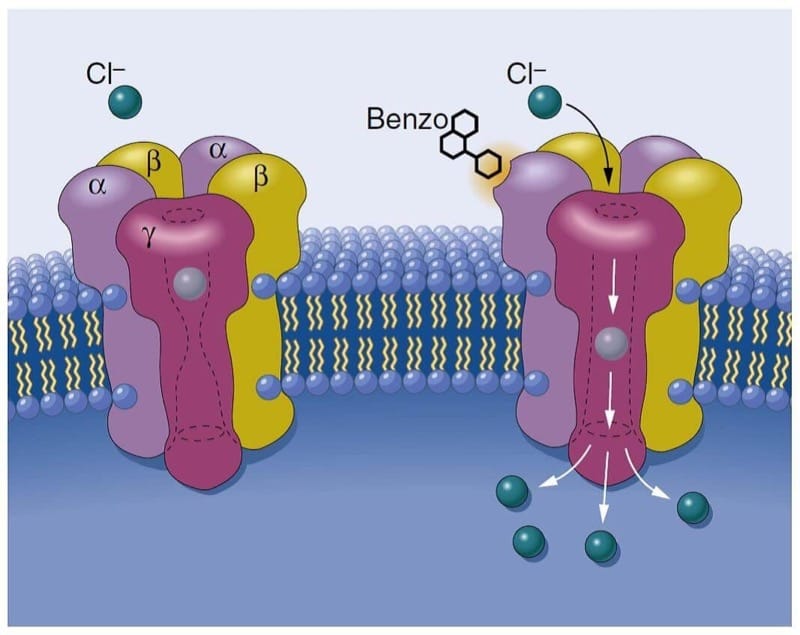Learning objectives
- Describe the indications for total intravenous anesthesia
- Describe the techniques and models used for total intravenous anesthesia
- Describe the advantages, disadvantages, and safety measures for total intravenous anesthesia
Background
- Total intravenous anesthesia (TIVA) is a technique where intravenous agents are used to induce and maintain general anesthesia, avoiding the use of inhalational anesthetics
- Continuous intravenous infusion is commonly done by a target-controlled infusion (TCI) pump, but can also be achieved using intermittent boluses or manual infusion techniques
- TCI allows precise and individualized administration of intravenous anesthetics
- Both hypnosis and analgesia can be achieved using an intravenous technique
- Goals for TIVA: Smooth induction, reliable and titratable maintenance, and rapid emergence
Indications
- Malignant hyperthermia susceptibility
- Long QT syndrome
- History of severe PONV
- Surgery requiring neurophysiological monitoring
- Anesthesia in non-theatre environments
- Transfer of anesthetized patients between different locations
- Sedation in intensive care
- Tubeless ENT procedures and rigid bronchoscopy
- Thoracic surgery
- Intracranial surgery
- Procedures requiring sedation (e.g., endoscopy, cardioversion)
Anesthetic agents
- Propofol is the hypnotic agent of choice for TIVA
- Analgesia can be achieved using short-acting opioids (alfentanil, remifentanil)
Target-controlled infusion (TCI)
- Sophisticated TCI syringe drivers incorporate real-time pharmacokinetic models that deliver the appropriate dose to achieve and maintain the requested target concentration
- The microprocessor within the syringe driver continuously calculates the appropriate infusion rates
- A bolus/elimination/transfer principle is used to maintain an appropriate plasma level of anesthetic agents
- Induction is achieved by a rapid propofol infusion, giving a bolus calculated to achieve the required plasma concentration
- This is followed by a progressively decreasing infusion rate calculated to match the transfer between compartments and elimination of the drug, maintaining the required plasma level
- Once the compartments reach a steady-state concentration, the infusion rate slows to match elimination only
- To increase the target plasma level, the syringe driver delivers an additional bolus to achieve the desired concentration and then maintains a higher infusion rate
- To decrease the target plasma level, the syringe driver stops infusing until the microprocessor calculates that the new target has been achieved, and the new level is maintained
- Modern TCI pumps also have software that allows titrating to effect-site concentration (the concentration in the brain)
- Depth of anesthesia monitoring (e.g., bispectral index) is required, as there is considerable variation in the uptake and effect of anesthetic agents in individual patients
Propofol TCI models
- Propofol TCI allows easy control and rapid change of the target propofol concentration
- Unpremedicated adult patients >55 years: Target propofol concentration 4-8 µg/mL for induction (usually takes 60-120 seconds)
- When co-administering an analgesic, maintenance at 3-6 µg/mL
- Lower target concentrations are used in the elderly population due to the risk of side-effects
- Propofol TCI is not routinely used in children
- Propofol TCI models:
- Marsh
- Calculations based on the assumption that the central compartment volume is proportional to the patient’s weight, ignoring age
- Assumes that the central compartment volume is 19.4 L for an 85 kg patient
- Designed primarily to target plasma concentrations
- Only used for patients >16 years of age
- Schnider
- Requires age, height, and body weight
- Calculates a sex-specific lean body mass and determines the dosages accordingly
- Assumes that the fixed central compartment volume is 4.27 L for an 85 kg patient (4-fold difference with the Marsh model)
- Allows for effect site concentration to be targeted
- More commonly used in the elderly population
- Paedfusor
- Variant of the Marsh model for patients 1-16 years of age
- Uses weight to calculate target plasma concentration and features a nonlinear scaling of central compartment volume as age exceeds 12 years
- Kataria
- Can be used for patients 3-16 years of age with a minimum weight of 15 kg
- Uses weight to calculate target plasma concentration
- Marsh
Other TCI models
- Minto: For remifentanil
- Bergmann: For fentanyl
- Maitre: For alfentanil
- Gepts: For sufentanil
- Eleveld: For propofol & remifentanil
- Domino: For ketamine
- Dick & Hannivoort: For dexmedetomidine
- Greenblatt: For midazolam
Analgesia
- Since propofol has no analgesic properties, TIVA is commonly achieved by combining propofol infusion with a regional block or supplemental opioids
- Supplemental short-acting opioids:
- Remifentanil
- Elimination half-time: 3-10 min
- Does not accumulate in hepatic or renal failure
- Context insensitive: the time required for the drug concentration to fall by 50% is always the same (~3 min), regardless of age, weight, sex, or hepatic or renal function
- Opioid of choice for TIVA for many anesthesiologists
- Can be given using the Minto model (allows easy titration based on patient age, gender weight and height
- Target plasma concentration: 3-8 ng/mL for induction, up to 15 ng/ml in stimulating procedures
- Ensure adequate analgesia after remifentanil has worn off
- Alfentanil
- Short onset time (90 s)
- Given using Maitre model (calculations based on age, gender and weight)
- Sufentanil
- Much more potent than remifentanil
- Longer duration of action
- Tends to accumulate during prolonged infusion
- Two TCI models: Gepts (fixed compartment volume) and Bovill (assumes that the central compartment volume is proportional to body weight)
- Remifentanil
Advantages & disadvantages
| Advantages | Disadvantages |
|---|---|
| More predictable onset and stability of maintenance | Pharmacokinetic and pharmacodynamic variability of response to the injected agent |
| Elimination of volatile anesthetics along with their possible liver and kidney toxicity, potential rise in intracranial pressure, their effect on the uterus, and possible environmental effects | Lack of ability to accurately assess actual blood levels |
| No need for accurately calibrated vaporizers | Variations in the hemodynamic state of the patient |
| Fast recovery with fewer complications, decreased time to discharge | Requirement for dedicated IV access, and risk of disconnection |
| Propofol is a powerful antiemetic | Risk of accidental awareness |
| Avoidance of nitrous oxide with its effect on air emboli and pneumothoraces, bone marrow suppression |
Safety
- Ensure the cannula is visible and accessible at all times and checked regularly to prevent disconnection or tissuing
- Check the pump setup regularly to prevent tubing disconnection, ensure clamps are open/closed accordingly, pump alarms are rectified and no backtracking of drug occurs
- Ensure the drug concentration matches the programmed concentration
- Ensure the correct syringe is placed in the correct syringe driver
- Use anti-reflux and anti-syphon valves with clamps in multilumen tubing for safe delivery
- Use a processed EEG monitor when a neuromuscular blocker is used
Suggested reading
- Nimmo AF, Absalom AR, Bagshaw O, Biswas A, Cook TM, Costello A, et al. Guidelines for the safe practice of total intravenous anaesthesia (TIVA). Anaesthesia. 2019;74(2):211-24.
- Pollard BJ, Kitchen, G. Handbook of Clinical Anaesthesia. Fourth Edition. CRC Press. 2018. 978-1-4987-6289-2.
- Al-Rifai Z, Mulvey D. (2016). Principles of total intravenous anaesthesia: Basic pharmacokinetics and model descriptions. BJA Educ 16(3): 92–7.
We would love to hear from you. If you should detect any errors, email us customerservice@nysora.com







